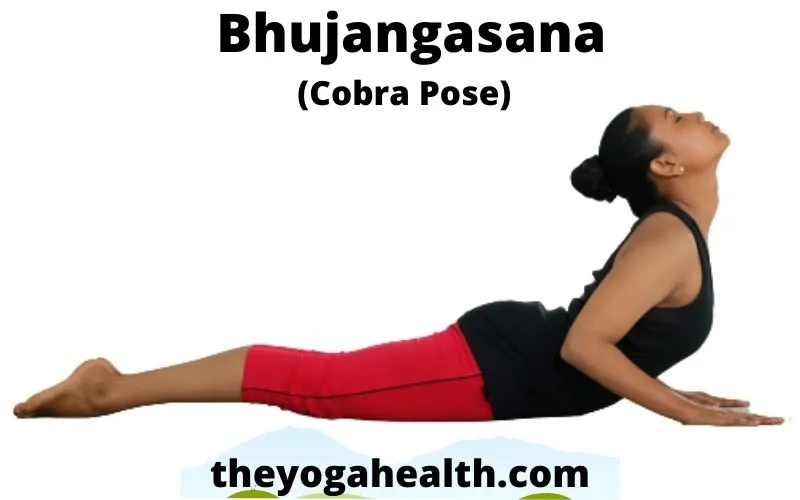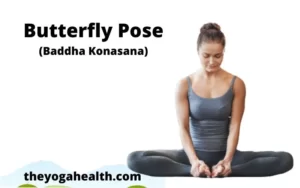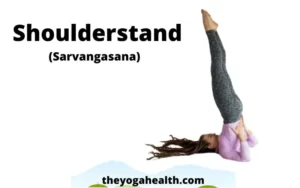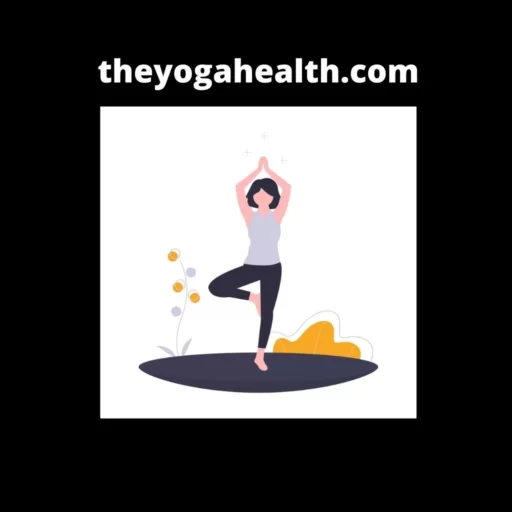Cobra Pose in Yoga is also known as ‘Bhujangasana‘, ‘Bhujang’ in the Sanskrit language means ‘serpent’ and ‘asana’ means the ‘pose’ or ‘posture’. Bhujangasana or cobra pose comes under the Hatha Yoga branch of Yoga. In this pose, the practitioner will lie flat on the floor on his belly, then he will lift his body from the trunk and moves his head back, just as a serpent is about to strike.
Table of Contents
Cobra Pose In Yoga (Bhujangasana)
Bhujangasana is also the part of Surya Namaskara (Sun Salutation). Bhujangasana is the basic backbend asana for the beginner level. Those who find this asana difficult to perform can start with Ardh Bhujangasana (Baby cobra pose).
This asana increases to boost energy in the body and can be included in the Yoga flow sequences.
Cobra Pose in yoga details
| Sanskrit Name | Bhujangasana |
| English Name | Cobra Pose |
| Difficulty Level | Beginners |
| Position | Lying down |
Cobra Pose Works On Following Muscles:
Cobra Pose benefits
Bhujangasana Cobra Pose has following benefits to the practitioner
1. Stretch and strength
Bhujangasana stimulates and strengthens both the front and back parts of the upper body. The muscles of the shoulders, upper back, middle back, lower back, and stomach are stretched to the maximum levels. This asana also stimulates and strengthens hands and ankle joints which normally do not get stretched.
2. Flexibility
This asana increases the flexibility in the body by stretching and contracting various muscles. The chest and rib cage are opened and stretched which gives strength to the core muscles. It also works on the posture of the person and corrects the minor defects in the spine.
3. Breathing
This asana opens the chest and ensures free, deep, and easy breathing. In this asana, the chest is expanded and stretched which strengthens the chest and rib cage.
All pores in the chest are opened fully which helps in smooth and deep breathing which ensures optimum supply of oxygen in the whole body. It helps to cure all respiratory-related ailments in the body.
4. Stimulate organs
This asana helps in stimulating all organs in the upper part of the body. As muscles of the upper body are stretched which puts pressure on the abdominal organs like uterus, spleen, pancreas, kidneys, liver, etc, which makes them fit and healthy.
5. Spinal injuries
This asana works wonders for people, who have spinal injuries. This is one of the yoga asanas, where all parts of the spinal cord i.e. upper, middle, and lower are stretched.
The people who have a problem with slip-disk will immensely benefit from regular practice of this asana. The slip disk will come back to its original position with this asana. People with spinal injuries must perform this asana under the proper guidance of a yoga expert.
6. Digestion process
It very efficiently works on the muscles of the stomach by putting lots of stretch and pressure on the stomach muscles which helps in correcting all digestion-related issues. It also helps in giving relief from gastric-related ailments and helps in curing constipation and indigestion.
7. Obesity control
This pose helps in controlling obesity by targeting excess fat around the belly. So people, who want to control their excess weight, must bring this asana into their daily practice.
8. Flexible spine
The regular practice of this pose makes the spine very flexible which cures all ailments related to the spine in the body. The full stretching of the spine, its upper, middle, and lower parts make the entire spine very flexible. A flexible spine is very useful in performing other yoga poses as well.
9. Improvement in blood circulation
This asana makes the blood circulation in the body very effectively. When fresh blood flows through various organs it cures many diseases and also gives strength to them to withstand infections and injuries.
10. Menstrual Cramps and Urinary bladder
This pose is very beneficial for women who experience excessive abdominal pain and discomfort during their monthly periods. It stretches and tones the organs of the abdomen and relieves the body of menstrual cramps. Pose also helps in curing all disorders of the urinary bladder.
How to do Cobra Pose in Yoga
1. Spread the yoga mat on the floor and lie down on it, face downwards. Keep your legs extended and feet together. Keep your knees firmly tight, toes pointing, and fully on the floor.
2. Keep your palms by the side of your pelvis region directly under your shoulders.
3. Take a deep breath and press the palms firmly on the floor and pull up your chest, your elbow should be tight.
4. Again take a deep breath, raise your body again from the chest till your pubis is in contact with the floor. Now stay in this position keeping the weight on the legs and palms.
5. Now contract your anus and your buttocks and also tighten your thighs.
6. Remain in this pose for about 20 to 30 seconds with normal breathing.
7. Now breathe out and bring your chest down on the floor by bending your elbows. You can repeat this asana two to three times or more as per your capacity.
Cobra Pose In Yoga (Bhujangasana) Precautions
When doing this asana your hand’s alignment under your shoulders is very important. If your hands are too far away or too close, then it will be an incorrect posture.
Also, make sure that your pubis should remain touching the floor and you straighten your elbows only that much not fully, do not lock your elbows. Your elbows should be pointing backward.
As normally the lower back is more flexible than the upper part of the back, so a person performing this asana can make the mistake of more flex in the lower area. Your aim to take maximum benefit out of this asana should be to flex the whole back.
Cobra Pose In Yoga contradictions
1. People who have undergone any abdominal surgery or operation must not perform this asana.
2. People suffering from hernia must also not perform this asana.
3. Pregnant women should also avoid this asana, as this asana puts a lot of pressure on the stomach area and the internal organs, it can put an adverse impact on the fetus during pregnancy.
4. If there is any injury on the shoulders, chest, or back areas this asana should be avoided.
Upward dog Vs Cobra Pose
Upward Facing Dog Pose and the Cobra Pose often find themselves in a comparative analysis. Despite their outward resemblance, these postures possess distinct qualities and unique merits.
The Upward Facing Dog Pose, known in the Sanskrit language as Urdhva Mukha Svanasana, serves as a rejuvenating backbend that fortifies the upper body, unfurls the chest, and enhances posture.
This pose imparts strength to the back and arms, stretches the chest and abdomen, uplifts the spirit, and augments vitality.
On the other hand, the Cobra Pose, referred to as Bhujangasana in Sanskrit, presents itself as a powerful backbend that bestows diverse advantages upon the body and psyche. It fortifies the spinal column, opens the heart and lungs, tones the abdomen, alleviates stress and weariness, and stimulates the process of digestion.
Upward Dog or Cobra, which Pose is Right for You?
Both the Upward Facing Dog Pose and Cobra Pose present a variety of benefits, making them valuable additions to your yoga routine based on your specific requirements.
If you’re aiming to strengthen your upper body, improve your posture, and uplift your mood, the Upward Facing Dog Pose could be the perfect choice for you.
Conversely, if you’re seeking to enhance the strength of your spine, open up your chest, and stimulate digestion, the Cobra Pose might be more suitable for your needs.
Although the Cobra Pose and Upward Facing Dog Pose share similarities and fall under the category of common backbend yoga poses, there are fundamental differences between them that every yoga practitioner should be aware of.
In the Cobra Pose, the lower body remains in contact with the ground, with the groin area and thighs firmly positioned to achieve a deep backbend.
Difference between Cobra and Upward Dog
The Cobra Pose is considered easier compared to the Upward Facing Dog Pose, making it an ideal choice for beginners and those experiencing back pain. It offers a gentle introduction to yoga practice.
On the other hand, the Upward Facing Dog Pose poses a greater challenge, making it suitable for intermediate and advanced yoga practitioners. It provides an opportunity to further develop strength and flexibility.
The Cobra Pose primarily focuses on opening up the chest and heart chakra, making it beneficial for individuals dealing with stress and anxiety. It offers a sense of expansion and release.
In contrast, the Upward Facing Dog Pose targets the strengthening of the back muscles, shoulders, and arms, while also aiding in digestion. It promotes a sense of empowerment and vitality.
In the Upward Dog Pose, the lower body, from the ankles to the hips, remains elevated above the floor, with the weight supported by the upper part of the feet and the palms. This posture specifically tests the strength of the arms and shoulders.
For those new to the world of yoga, starting with the Cobra Pose is recommended before progressing to the more challenging Upward Facing Dog Pose (Urdhva Mukha Svanasana).
However, individuals with a strong back can opt for the Upward Facing Dog Pose, as it offers greater difficulty and more extensive benefits compared to the Cobra Pose.
To summarize, the Upward Facing Dog Pose and Cobra Pose are distinct yoga postures, each with its own unique advantages. Understanding their disparities and benefits enables you to make an informed decision when incorporating them into your yoga routine.
Conclusion:
Cobra Pose (Bhujangasana) works magically in cases of the injured spine and cases of minor displacement of spinal discs. The regular practice of this asana replaces the discs to their original position. This asana also stimulates the spinal region and helps in the full expansion of the chest.
FAQs:
Q1. Does Cobra Pose reduce belly fat?
Ans: It definitely helps in reducing belly fat but for that you have to regularly practice this pose in correct manner, along with changes in your diet and lifestyle.
Q2. How many times should you do Cobra Pose?
Ans: This Pose can be done 2 to 3 times or more as per your specific requirement but always make sure to follow the prescribed breathing patter during the pose.
Q3. What muscles are used in Cobra Pose?
Ans: Following muscles are used in this Pose; Upper Back, Middle Back, Lower Back, Chest, Rib-cage, Upper Abdomen, Lower Abdomen, Biceps, triceps and Sholders.
You may also like:
Share your experience of doing Cobra Pose and let us know if you have any questions or comments regarding this Pose in the comments section below.






